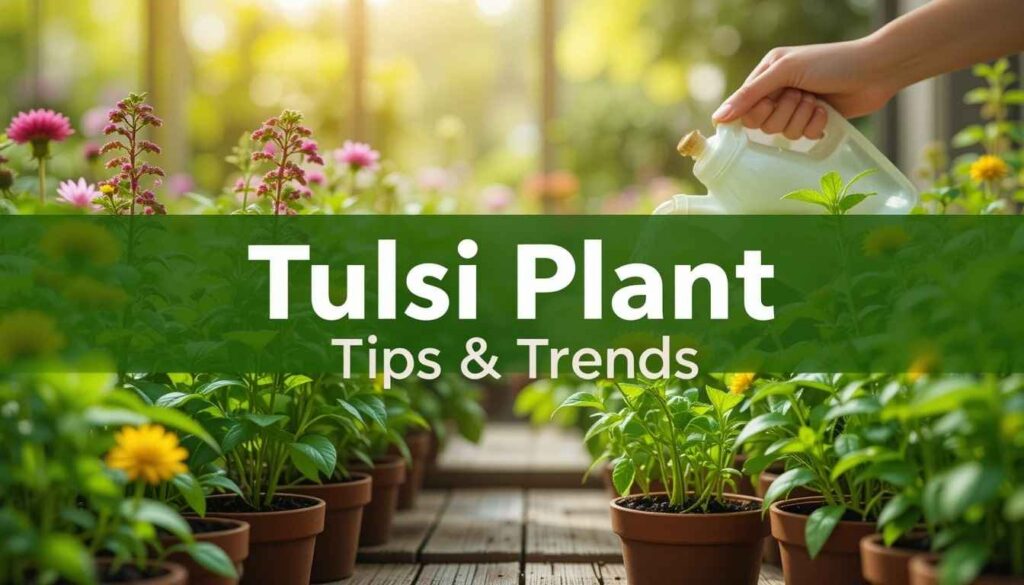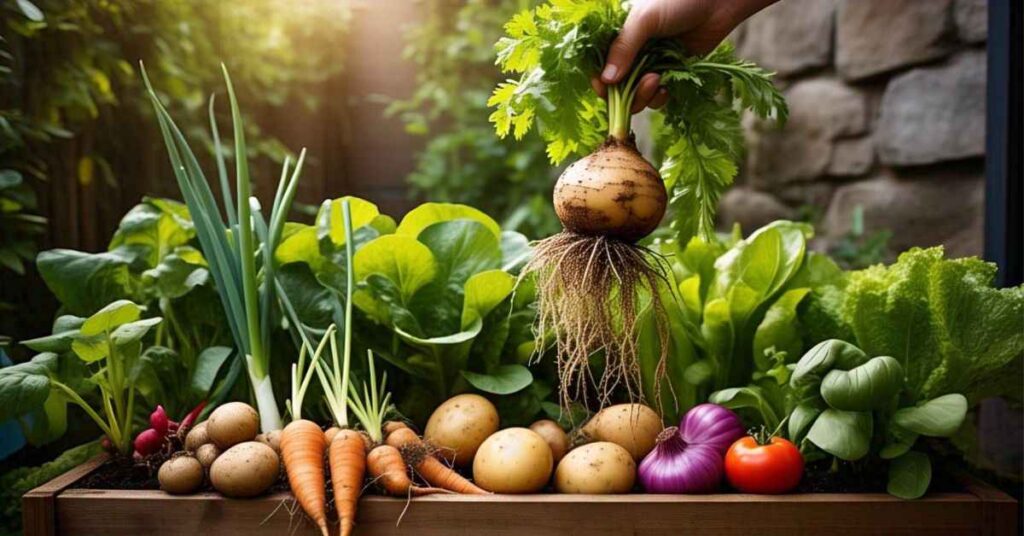If you’re a first-time gardener or just starting your journey into backyard vegetable gardening, choosing the right tomato variety can make all the difference between frustration and success. That’s where disease-resistant tomato varieties come in—they offer resilience against common issues like blight, wilt, and rot, which are often the downfall of new gardeners.
The United States has diverse climates—from the humid Southeast to the arid Southwest and the cooler Pacific Northwest—so selecting tomato varieties that thrive in your specific region is essential. In this article, we’ll explore the best tomato varieties for beginners , focusing on those that are disease-resistant , high-yielding, and well-suited for US climates.
By planting these proven performers, you’ll not only enjoy a bountiful harvest but also minimize the need for chemical treatments and interventions. Let’s get in!
Know US Climate Zones for Tomato Growing
Before we jump into our list of top picks, it’s important to understand how climate affects tomato growth. The USDA Hardiness Zone Map divides the country into zones based on average minimum winter temperatures. Most tomato plants thrive in zones 4–10 , though some may require longer growing seasons or protection in colder areas.
Here’s a quick guide:
| Climate Region | Key Challenges | Recommended Variety Traits |
|---|---|---|
| Northeast | Shorter season, cool springs | Early maturing, cold-tolerant |
| Midwest | Variable weather, humidity | Disease resistance, heat tolerance |
| Southeast | Humid, hot summers | Heat-set fruiting, fungal resistance |
| Southwest | Dry, intense sun | Drought tolerance, shade protection |
| Pacific Northwest | Cool, wet springs | Blight resistance, compact size |
| West Coast | Long warm season | Indeterminate types, container-friendly |
Choosing the right tomato variety for your climate zone ensures better growth, higher yields, and fewer problems along the way.
3. Top 7 Disease-Resistant Tomato Varieties for Beginners
Now let’s look at the top 7 disease-resistant tomato varieties ideal for beginners , especially in US climates. These tomatoes are known for their resilience, flavor, and ease of care.
3.1. Big Beef (VFFNTA Resistance)
Big Beef is one of the most popular hybrid tomato varieties among home gardeners. It produces large, juicy fruits weighing up to 12 ounces and is resistant to Verticillium Wilt (V), Fusarium Wilt (F), Nematodes (N), Tobacco Mosaic Virus (T), and Alternaria Leaf Spot (A) — making it an excellent choice for beginners.
- Type : Indeterminate
- Days to Maturity : 72 days
- Climate Suitability : All zones, especially good for Midwest and Northeast
This beefsteak-style tomato is perfect for sandwiches, slicing, and fresh eating. Its vigorous vines benefit from staking or caging.
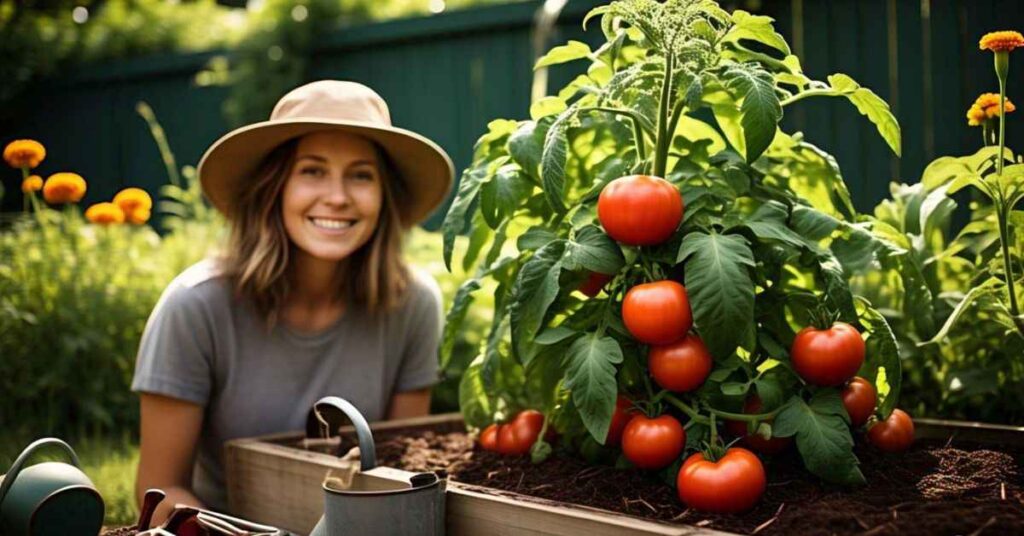
3.2. Roma VF (VF Resistance)
For sauce lovers, Roma VF is a classic paste tomato. It’s bred specifically for disease resistance and productivity, offering thick walls and low moisture content—ideal for canning and cooking.
- Type : Determinate
- Days to Maturity : 75 days
- Climate Suitability : Warm climates (Zones 5–10)
Roma VF stands out because of its resistance to Verticillium and Fusarium wilts , two of the most common soil-borne diseases. This makes it a reliable option for both containers and garden beds.
Pro Tip : Try growing Roma VF in raised beds for better drainage and easier maintenance. 🌱
👉 Learn more about using raised beds for veggies here .
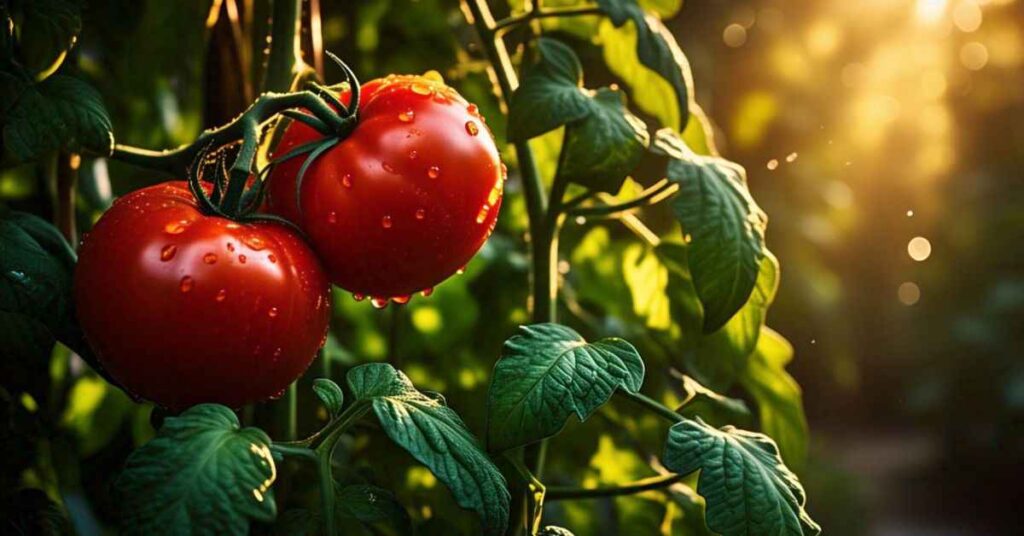
3.3. Celebrity (VFN Resistance)
Celebrity tomatoes are a go-to for many gardeners due to their consistent performance and disease resistance. They’re known for producing medium-sized, flavorful fruits that are perfect for slicing, salads, and snacking.
- Type : Determinate
- Days to Maturity : 70 days
- Climate Suitability : All zones, especially humid regions
With resistance to Verticillium Wilt, Fusarium Wilt, and Nematodes , this variety thrives even in challenging conditions.
Bonus : Celebrity is also tolerant of temperature extremes, making it a great pick for unpredictable spring or fall weather.
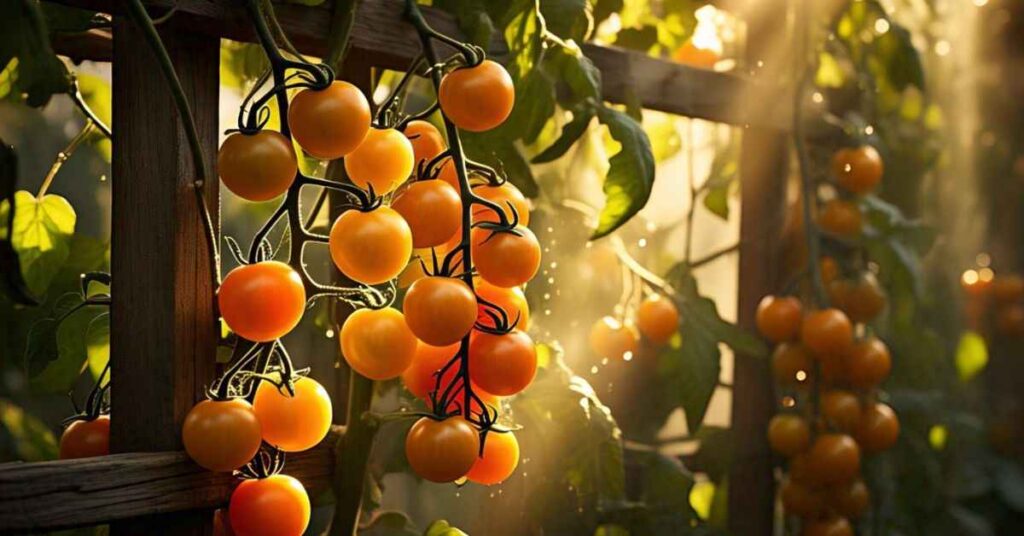
3.4. Sun Gold (Disease-Tolerant Cherry Tomato)
Sun Gold cherry tomatoes are a favorite among gardeners and chefs alike. Known for their super-sweet flavor , they’re packed with vitamins and ripen early in the season.
While not labeled with formal disease resistance codes, Sun Gold shows strong tolerance to blight and leaf spot diseases , especially when grown with proper spacing and airflow.
- Type : Indeterminate
- Days to Maturity : 57 days
- Climate Suitability : Zones 4–10
These golden-orange tomatoes are prolific producers and perfect for beginners who want a steady supply of snackable fruits.
Pro Tip : For best results, support Sun Gold vines with cages or stakes.
👉 Check out our full guide on how to grow tomatoes from seed here .
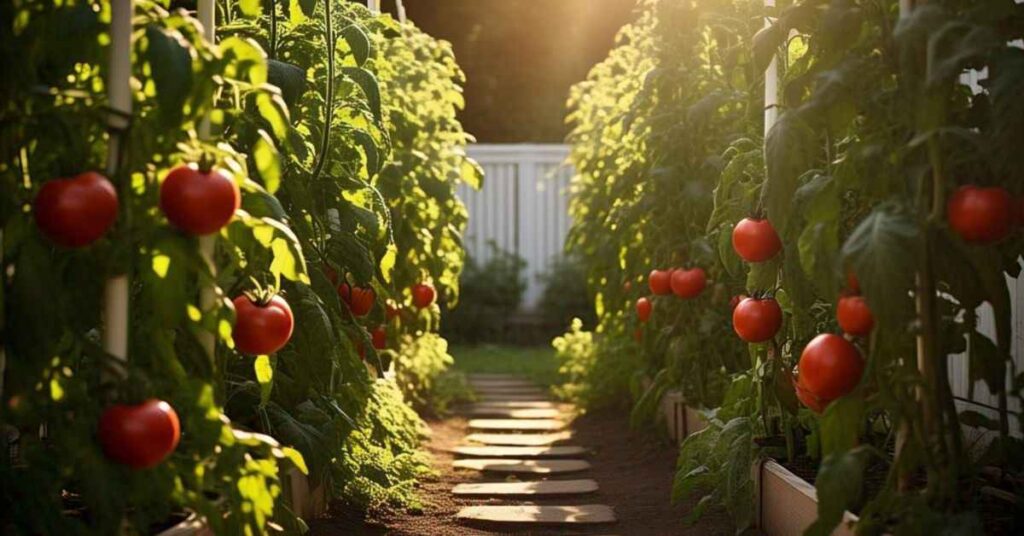
3.5. Mountain Magic (Highly Resistant to Late Blight)
Mountain Magic is a newer hybrid developed by Cornell University specifically for resistance to late blight , a devastating disease that wiped out crops during the Irish Potato Famine.
- Type : Indeterminate
- Days to Maturity : 70 days
- Climate Suitability : Cooler, moist regions (Pacific Northwest, Northeast)
This small, round, red tomato is perfect for fresh eating and salads. It’s also highly productive and continues bearing until frost.
Why It’s Great for Beginners :
Its resistance to late blight gives gardeners in cooler, wetter climates a fighting chance at a successful tomato harvest without chemical sprays.

3.6. Brandywine (Heirloom Option with Good Disease Tolerance)
Brandywine is a beloved heirloom tomato known for its rich flavor and meaty texture. While not as disease-resistant as hybrids, it holds up well if given proper care and air circulation.
- Type : Indeterminate
- Days to Maturity : 80–90 days
- Climate Suitability : Zones 5–10
Choose Brandywine if you’re ready to invest a little extra time in pruning and monitoring, but want a flavor-packed heirloom experience.
Tip : To prevent disease, stake or cage plants and avoid overhead watering.
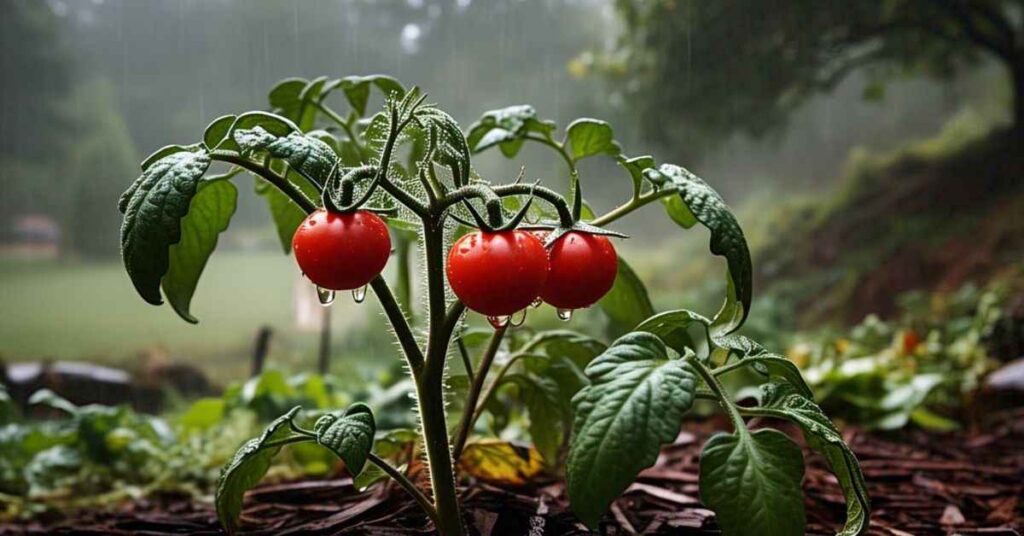
3.7. Sweet Million (Ultra-Productive Cherry Tomato)
Sweet Million is a high-yielding cherry tomato that produces thousands of small, sweet fruits per plant. It’s naturally resistant to several common diseases and adapts well to various climates.
- Type : Indeterminate
- Days to Maturity : 65 days
- Climate Suitability : Zones 4–10
Perfect for beginners looking to impress friends with baskets of tasty tomatoes, Sweet Million grows well in gardens, containers, and even greenhouse environments.
Pro Tip : Use a trellis or tomato netting to keep vines off the ground and reduce disease risk.
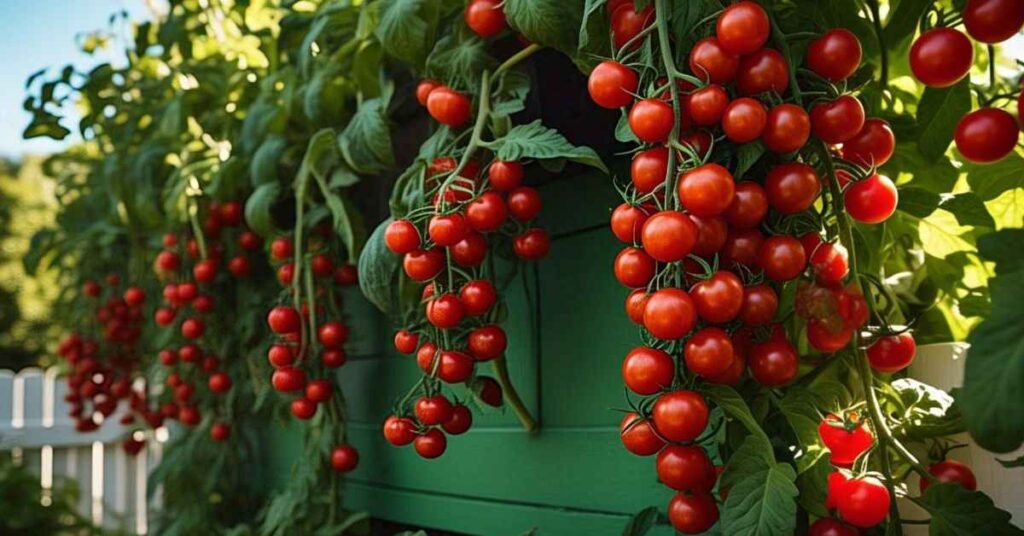
4. Tips for Planting and Caring for Beginner Tomato Plants
Once you’ve chosen your preferred tomato varieties , follow these expert-approved tips to ensure healthy growth and abundant harvests.
Start Seeds Indoors
Begin indoors 6–8 weeks before your last frost date to give plants a head start. Use a seed starting mix , warmth, and light for best results.
👉 Need help starting from seed? Follow our step-by-step guide here .
Use Raised Beds or Containers
Raised beds provide better drainage and warmer soil, which is crucial for tomatoes. Containers work well too—especially for determinate or dwarf varieties.
Plant Deeply
Tomatoes can be planted deeply—the buried stem will develop roots. Bury up to two-thirds of the plant for stronger root development.
Water Consistently
Provide 1–2 inches of water weekly , preferably delivered directly to the roots. Avoid overhead watering to reduce disease risk.
Mulch Generously
Apply 2–3 inches of mulch (straw, shredded leaves, or grass clippings) around plants to retain moisture, suppress weeds, and regulate soil temperature.
Fertilize Smartly
Feed every 2–3 weeks with a balanced organic fertilizer or compost tea. Avoid excessive nitrogen, which promotes leaf growth over fruit.
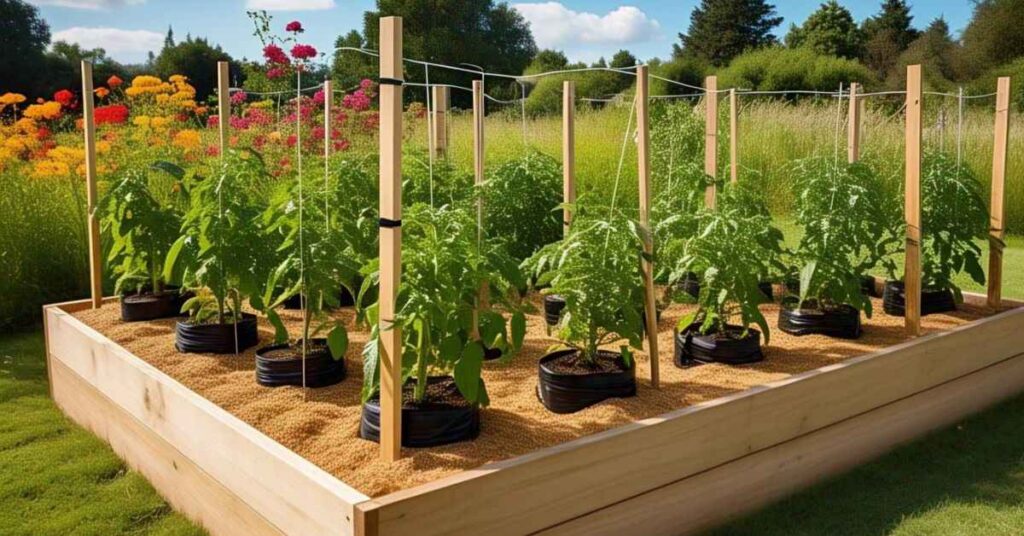
5. Companion Plants to Boost Tomato Growth
Companion planting helps deter pests, improve pollination, and boost overall plant health. Here are some great companions for your beginner tomato garden :
- Basil : Repels aphids and enhances flavor.
- Marigolds : Discourages nematodes and whiteflies.
- Nasturtiums : Attracts beneficial insects and repels pests.
- Carrots : Root vegetables don’t compete for space above ground.
- Onions/Garlic : Natural pest deterrents.
Avoid planting tomatoes near potatoes, corn, or fennel , as these can encourage disease or inhibit growth.
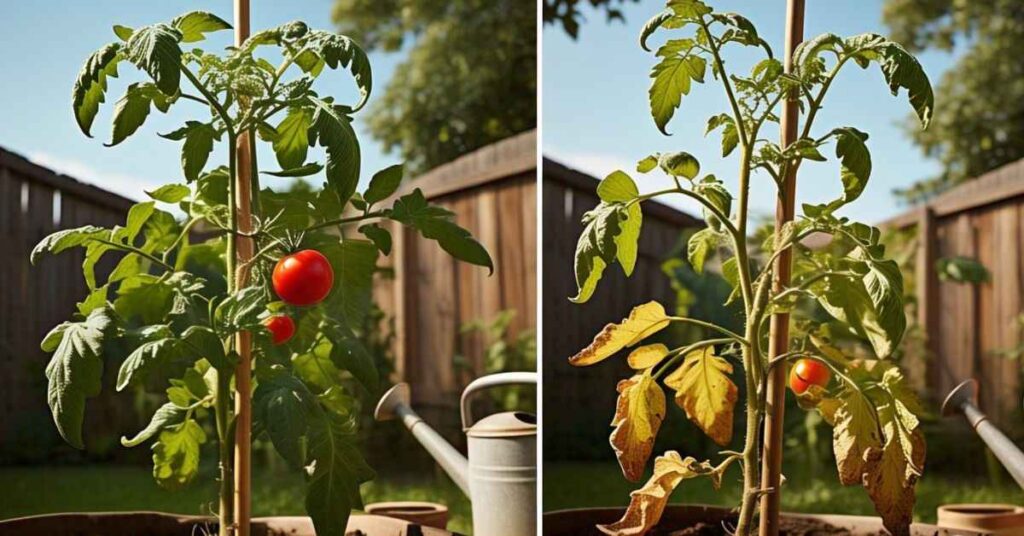
6. How to Prevent Common Tomato Diseases
Even with disease-resistant varieties, prevention is key. Here’s how to keep your tomato plants healthy:
Practice Crop Rotation
Rotate crops yearly to prevent soil-borne diseases like blight and wilt.
Improve Air Circulation
Space plants properly and prune indeterminate types to allow airflow.
Use Mulch
Prevents soil splash and keeps foliage dry.
Avoid Overhead Watering
Water at the base to reduce leaf wetness and fungal spread.
Remove Diseased Leaves
Promptly remove yellow or spotted leaves to stop infection spread.
Use Organic Sprays
Neem oil, copper fungicide, or homemade baking soda spray can help control early signs of disease.
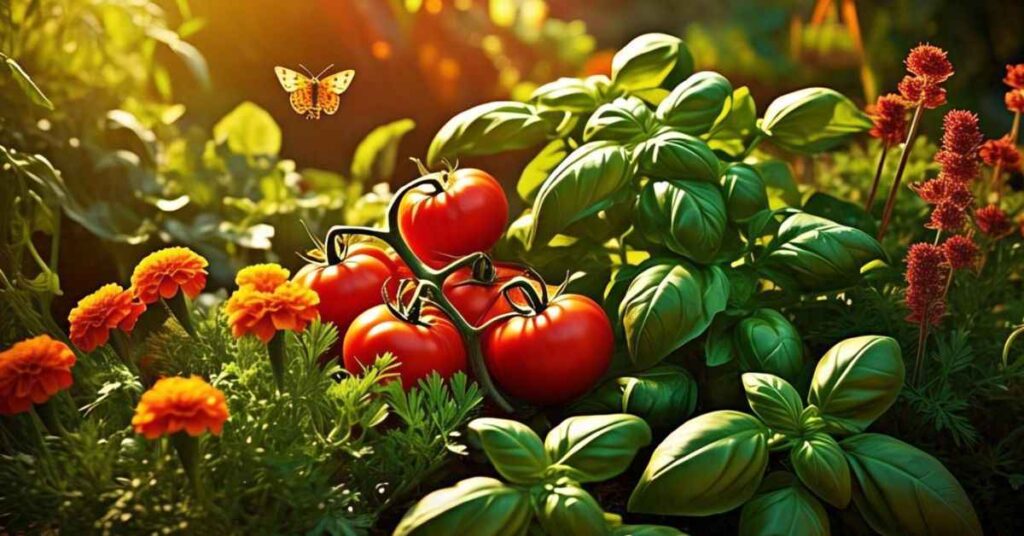
7. Conclusion: Start Growing with Confidence
Whether you live in the humid South, the cool Pacific Northwest, or anywhere in between, there’s a tomato variety perfectly suited for your climate . By choosing disease-resistant options , you set yourself up for success from the very beginning.
From the robust Big Beef to the sweet Sun Gold , each of these varieties offers something unique while being forgiving for new gardeners. With proper care, companion planting, and attention to disease prevention, your tomato garden will flourish.
So grab your seeds, prepare your soil, and get ready to enjoy the fruits of your labor—all while knowing you’ve made smart, sustainable choices for your garden.
Happy Gardening! 🍅🌱
